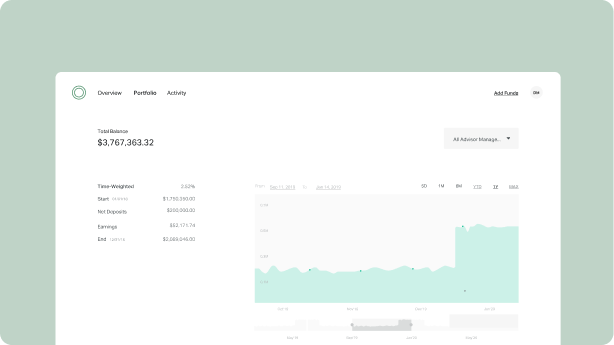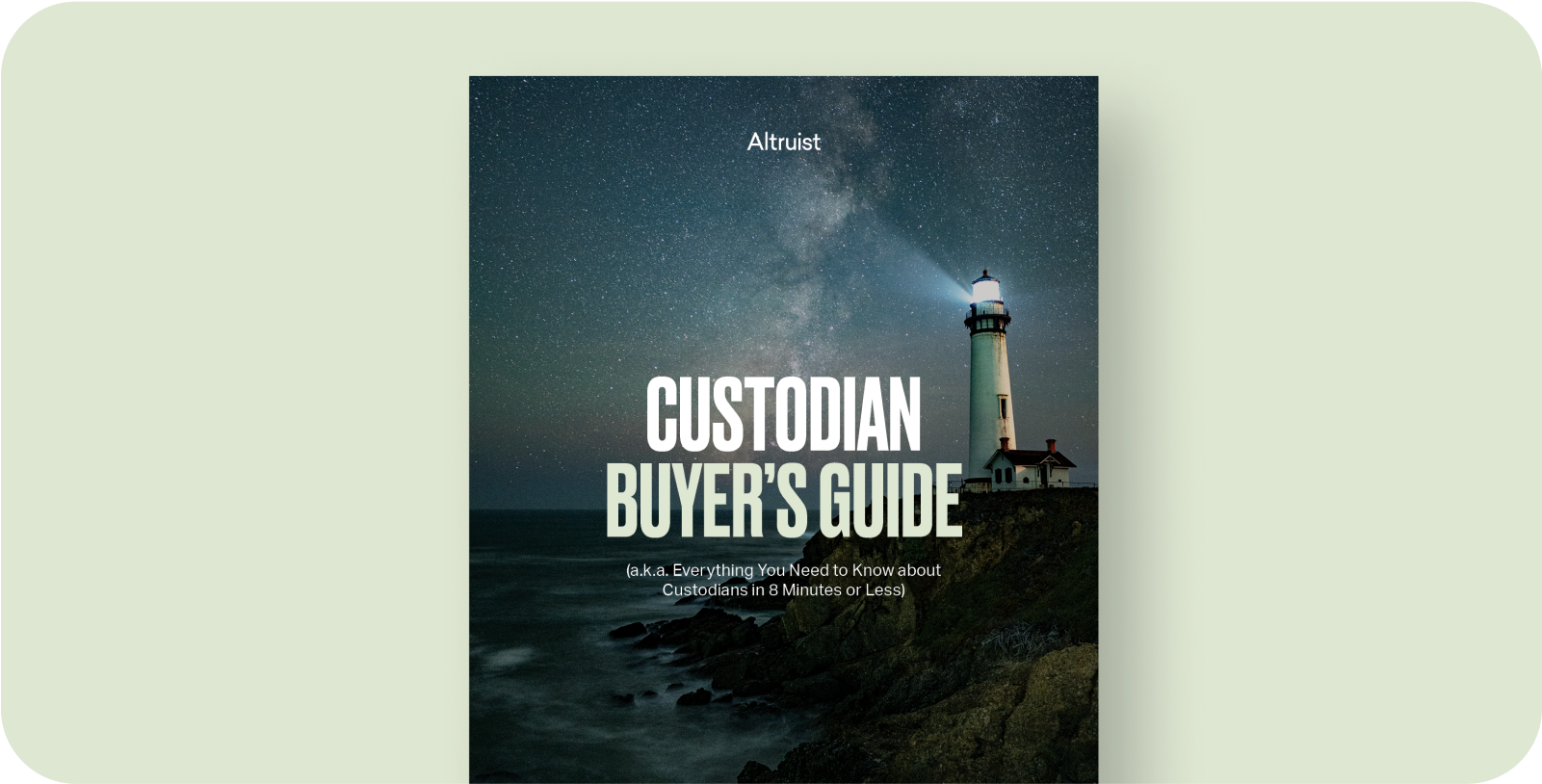Note: this page was updated on May 2, 2024
As a financial advisor, going independent offers a unique opportunity to better serve your clients while simultaneously pursuing professional growth and seeking more personal fulfillment.
If you’re a California advisor considering making this transition, there are a range of requirements you’ll need to meet when starting an RIA. From understanding California's specific regulatory landscape to actually establishing your firm, this guide will provide a step-by-step approach to starting an RIA in California.
Who is required to register in California?
Investment advisors who serve more than five California residents and manage less than $100 million in AUM will typically need to register with the state. This rule also applies if you simply market your services in the state (even if you have less than five clients in CA). Note: if you manage more than $100 million in AUM, you may need to instead register with the SEC.
The state registration process is overseen by the California Department of Financial Protection & Innovation (DFPI) and involves several key steps and requirements.
What licenses does an RIA need in California?
To become an RIA in California, you must first pass certain examinations or hold specific professional designations. The most common requirement is passing the Series 65 exam. Alternatively, you can pass the Series 66 and Series 7 exams combined, or obtain other appropriate designations such as CFP, CFA, CIC, ChFC, or PFS. These licenses demonstrate your knowledge and expertise in the field of investment advising.
For a comprehensive look at how to start a successful RIA – in California or any other state – check out our Going Independent Series, which covers everything you’ll need to know about the jump to independence: from compliance set up, to transitioning existing clients, to scaling your new independent firm.
How much does it cost to register an RIA in California?
All RIA firms that register with the state of California must pay annual registration fees for both the firm itself, and each IAR it employs. Those annual fees in California for 2024 can be found below:
RIA Fee: $125
Investment Advisor Representative (IAR): $25
FINRA Annual Renewal Fee: $35
How to register as an RIA in California
Registering to become an RIA in California requires advisors to complete all necessary documentation, as well as set up ongoing procedures to ensure they remain in compliance. The basic process is outlined below:
- Prepare Your Documents: Gather all necessary documents, including Form ADV, financial statements, and disclosure documents. Ensure all information is accurate and current. Many of these documents, along with instructions and checklists, can be found on the California DFPI website.
- Register with FINRA: Create an account with FINRA's WebCRD/IARD online system. This is where you will submit your registration application and other required documents.
- Pay Registration Fees: Pay the required initial and renewal state registration fees through the Investment Adviser Registration Depository (IARD) system.
- Complete Form ADV: Fill out Form ADV Part 1 and provide brochures in Form ADV Part 2A and Part 2B. These forms will provide detailed information about your firm and its services.
- Establish Policies and Procedures: Develop the necessary policies and procedures for your firm, such as a Policies and Procedures Manual, Client Advisory Contract, Code of Ethics, Privacy Policy Statement, Anti-insider Trading Policy, and Business Continuity Plan.
- Register Investment Advisor Representatives: Investment advisor representatives (IARs) will also need to register individually in California by completing Form U4 on CRD. Officers, directors, partners, and owners of 10% or more of a registered firm must also file Form U4.
- Maintain Compliance: Once registered, it's crucial to stay compliant with all regulatory requirements. This includes updating your Form ADV annually, paying renewal fees, and ensuring that your policies and procedures are up to date.
Financial statement requirements for RIAs in California
In the course of registering, RIAs in California must submit basic financial statements for the business, including a balance sheet and income statements. These will typically be prepared by you, your accountant, or your management team and should show the state a clear picture of your firm's financial health.
California also includes certain net capital requirements for RIAs, which vary according to how client funds are held.
- Firms with custody of client funds or securities must maintain a minimum net worth of $35,000 at all times.
- Firms with discretionary authority over client funds or securities, but without custody, are required to keep a minimum net worth of $10,000 at all times.
- Firms that accept prepayments exceeding $500 per client, paid six months or more in advance, must maintain a positive net worth consistently.
How long does it take for RIA registration approval in California?
The process of registering an RIA in California can vary between 45-90 days, starting from when you first initiate the process until the CA DFPI officially confirms the filing. After submitting all necessary documents and covering the registration fees, state regulators may take up to 45 days to review your RIA registration application.
As a heads-up: during this period, it’s not uncommon for the state examiner to send something called a “deficiency letter” requesting further details or clarifications on your initial registration. Your response to a deficiency letter merits careful attention – advisors should proactively address any issues so the process can move forward smoothly.
RIA forms and policies checklist for California
To help you navigate the registration process, here's a checklist of the forms and policies you'll need:
- Form ADV Part 1 (online)
In this portion of the ADV, RIAs will disclose information about how they conduct business. The information includes details about the advisor's business and ownership structure and any affiliations related to business practices, clients, and additional information about employees. Part 1 is also used to upload ADV Part 2A and Part 2B.
- Form ADV Part 2A (paper and online)
Form ADV Part 2A is your firm's brochure that details the RIA's services, fees, disciplinary disclosures, and other details. As with other states, California requires it to be written in plain English.
- Form ADV Part 2B (paper and online)
Unlike 2A, this part is all about the advisor. It contains information about the advisor's employment, education, conflict of interest, and disciplinary information. Anyone else at the firm giving investment advice to clients, including Executive Officers, must also have a Form ADV 2B.
Both of these brochures are given to your clients, prospective and current.
- Business Formation Documents
Copies of articles of incorporation, partnership agreement or articles of organization depending on your firm’s business structure, and any amendments.
- Financial statements
These are your balance sheet and income statements, discussed above.
- Policies and Procedures Manual
For your Policies and Procedures Manual, you must include your RIA’s internal policies on all parts of your business. From handling clients’ complaints to training new advisors to join your firm – every policy and procedure you practice at your RIA must be included and explained in this manual.
Additionally, you will need to include your RIA’s Information Technology Policy, Anti-insider Trading Policy, Business Continuity Plan, and Anti-money Laundering Policy.
- Client Advisory Contract
In this contract, you will detail the relationship your RIA will have with your clients. This contract is also required to meet the regulatory authority standards for client advisory contracts in California.
- Code of Ethics
This formal document outlines the ethical and professional standards expected of advisors registered with the SEC or California regulators. The code of ethics ensures advisors act in the best interests of their clients, promoting integrity, fairness, and honesty in all their professional activities.
- Privacy Policy Statement
Your RIA’s Privacy Policy is given to your clients at the beginning of your agreement and must be shared on an ongoing basis annually. It must explain how the firm stores and handles client information. Your policy should be tailored to your RIA’s specifications and must meet the State of California’s compliance requirements.
Ready for independence?
Working through the registration process to become an RIA in California might seem daunting at first, but if you partner with the right custodian and have access to a strong support system, it’s possible to streamline the move to independence.
About Altruist
Altruist helps advisors seamlessly transition to a modern custodial platform built specifically for RIAs. Simplify your tech stack, reduce overhead, delight your clients, and grow your business. True independence awaits.
If you're ready to make the leap, our team of experts is here to help you navigate the path to forming an RIA in California – schedule a call today.
Still deciding? Explore our in-depth RIA Launch Kit that includes even more detail about the essential steps to get your RIA off the ground in California and beyond.
*Altruist and its affiliates do not provide legal advice, so it’s important to check with a qualified professional for each state’s registration requirements.
















